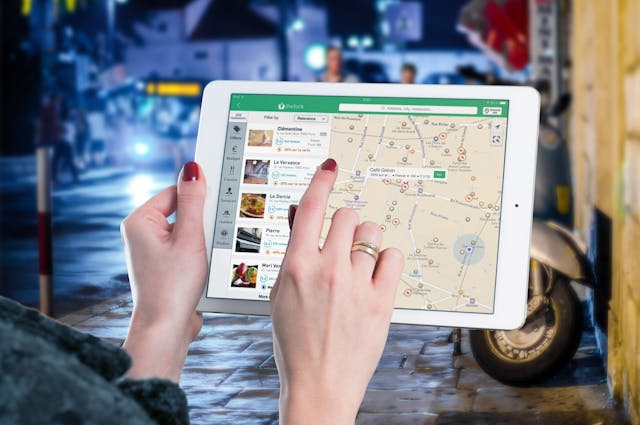6 Ways GIS Can Improve Your Business
A Geographic Information System (GIS) helps visualize, analyze, and strategize geographic information. It uses spatial analysis to grasp location patterns and garner insight from the corresponding data.
GIS has proven to be an essential business intelligence tool. It delivers actionable insight into factors such as the location of a business's customers, warehouse, stores, demand patterns, etc.
This post will explore six ways GIS applications transform business operations.
1. Visualize business data
Visualization involves plotting data on maps, the first step toward complete visibility of business operations. You can apply geospatial insight to your data, revealing connections between data points.
Businesses can use cluster analysis and heat maps to clarify operational coverage and competition, visualize leads and lead density, and distribute sales reps. GIS apps highlight poor market coverage and help improve business performance by identifying possible measures.
2. Improve marketing
GIS software applications reveal spatial relationships, a strategic advantage for businesses. For example, retail companies and consumer goods producers can use geospatial analytics to change prices based on location, analyze buying behavior, grasp customer preferences, and launch marketing campaigns.
Businesses can change working hours in specific locations based on GIS data. They can identify the most profitable customer group in a given area and run a loyalty program there. They can also use point-of-interest data to find a new target group for their service or product.
3. Leverage insight for territorial planning
GIS apps can provide geospatial data and help businesses map sales territories based on customer and lead density. Territories can also be mapped based on demand, and you can quickly identify low-coverage areas.
Businesses can map and remap territories by superimposing geospatial data on sales coverage and recognizing patterns of demand for their products.
You can plan sales territories by leveraging geospatial data to guarantee sufficient territorial coverage and change trade areas.
4. Revolutionize supply chains
GIS is a solid tool for planning supply chain networks. It helps establish the best locations for stores, warehouses, distribution centers, and supply facilities. eCommerce platforms can use this tool to create clusters and map all retailers. GIS recommends the most suitable locations for warehouses and other facilities by considering the number of agents required per cluster, the number of orders per cluster, and the most efficient delivery routes.
5. Better market analysis
GIS can collect information about customers and their habits and create sales pattern maps. You can collect a customer's number, address, or office location to find out where they are most likely to shop. You will learn where your customers are and where they want to go. Then, you will know where to market and focus business growth efforts.
The ability to see and analyze data on a map affects the speed and quality of decision-making. You become able to define and strategize growth policies using structured, accurate, and current information.
GIS technology is highly effective in helping businesses craft a market expansion strategy. Businesses can create intelligent trade zones by studying order volume per zone, spending patterns, the average order value per zone, customer demographics, and more. They can identify zones with high revenue potential and underserved geographical areas.
6. More efficient operations
Before GIS technology entered the market, mapping processes were far less efficient, cumbersome, and more expensive in terms of operations. With this technology's help, businesses can streamline each component of their operational cycle. These include optimizing delivery routes, dynamic route optimization, intelligent beat planning, and accelerating field mobility.
The majority of business data involves geographical locations, so businesses can use the power of spatial analysis to create interactive maps and share rich insights. Data visualization enables a more meaningful interpretation of data by revealing new tendencies and making operations less complicated.
Final thoughts
GIS applications guide businesses to transition from retrospection to strategic forethought. Company leaders can benefit from geospatial analysis tremendously. It helps businesses make better decisions and streamline workflows.

